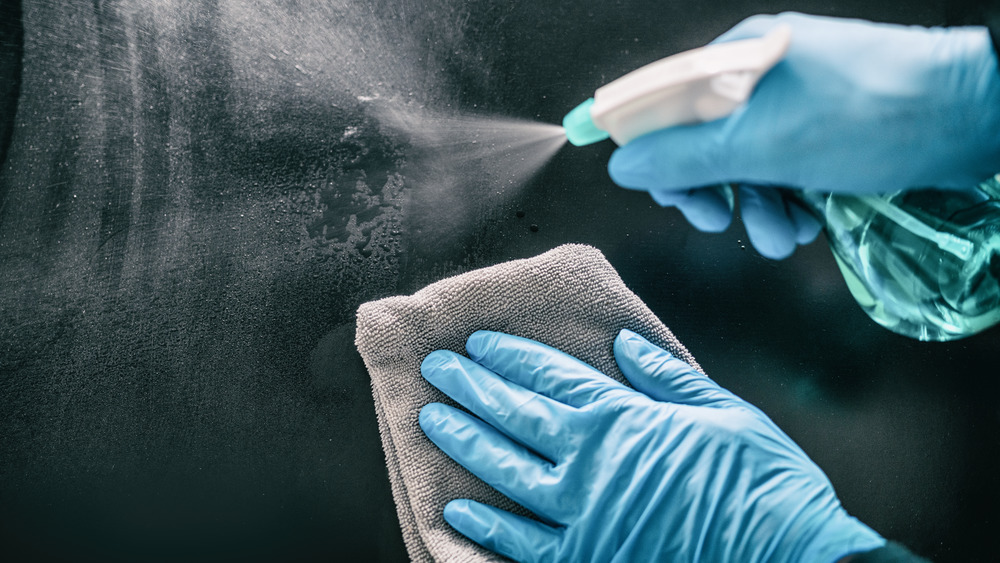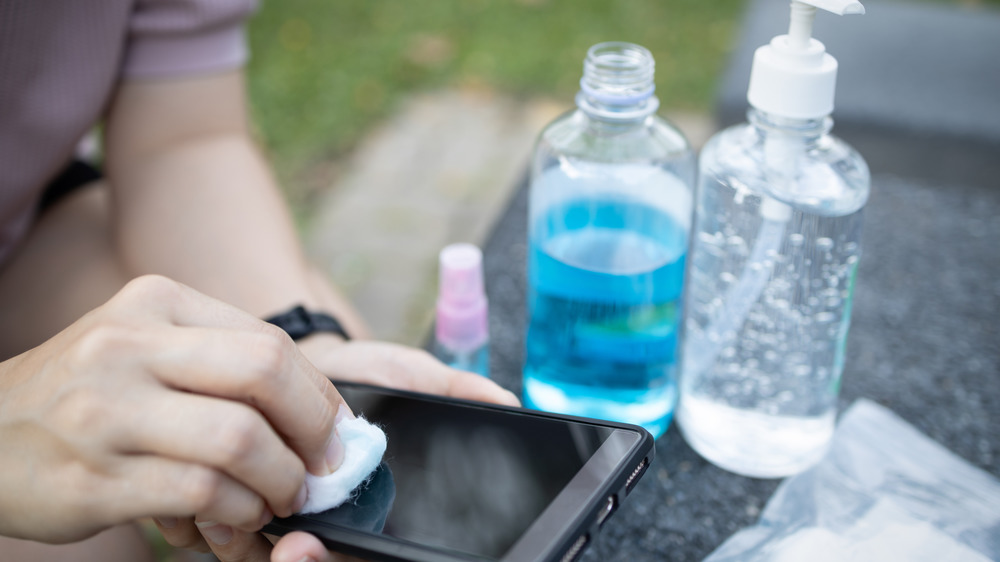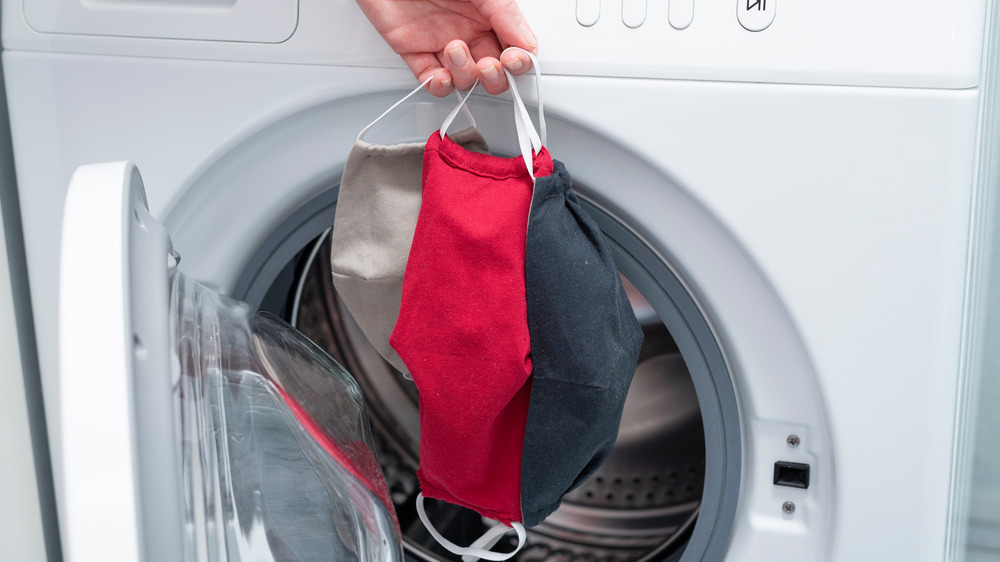The Two Things You Should Be Sanitizing Every Day
We are now nine months into the global COVID-19 pandemic which has claimed the lives of over 250,000 Americans and 1.3 million people worldwide (via Johns Hopkins). Cleaning surfaces frequently, wiping down packages, and washing our hands religiously has become part of our "new normal." You may find yourself wondering, "Do I really need to be cleaning this?" or "Should I be sanitizing that?" Let's breakdown what scientists and experts really recommend.
First, it's incredibly important to know the differences between cleaning, disinfecting, and sanitizing.
Cleaning refers to the process of physically removing dirt, dust, crumbs, and germs from surfaces or objects (via MedlinePlus). This is usually done with soap and water on a paper towel or cleaning cloth. Cleaning does not necessarily kill any of the germs, however, but it will decrease the number of germs present on surfaces.
Disinfecting is the use of chemical disinfectants to kill germs on surfaces and objects. Disinfectants do not typically "clean" surfaces or remove germs, but they do kill the viable germs on a surface. It is important to read the directions on disinfectant products to ensure you are using the products as intended, so you can yield the maximum results.
Lastly, sanitizing is the process of actually lowering the number of germs on a surface to a "safe" level. This can be done by cleaning, disinfecting, or both. What qualifies as a "safe" level of germs is determined by public health officials, i.e; requirements and procedures for sanitizing vary for restaurants versus school settings. So what are the two things you should be sanitizing daily?
1. You should be sanitizing your smartphone
In addition to high-touch surfaces like doorknobs, light switches, countertops, the Centers for Disease Control and Prevention recommends cleaning your smartphones and your face masks daily.
Cleaning and sanitizing your smartphone may seem obvious. It's no secret that as a society we are addicted to our smartphones and take them everywhere with us, sometimes without even consciously being aware of it! So yes, you should be sanitizing your phone daily. One study out of Estonia in 2017 looked at the number of bacteria and germs on 16 to 18-year-old students' phone screens (via Germs). It found that almost 80 percent of the phone screens contained potentially harmful bacteria such as Staphylococci bacteria. If you think about where you bring your phone — the grocery store, the bathroom, and then in the comforts of your bed — it's easy to see how germs can spread and infect you, even making you sick.
The good news is that most phones can be cleaned daily without compromising or ruining your phone. Be sure to check your phone manufacturers' recommended methods of cleaning (via Livestrong). Most will recommend using a dry cloth, 70 percent isopropyl alcohol wipes, or even Clorox disinfecting wipes. Avoid using bleach-containing products and do not dunk your phone in any liquids. If you find yourself leaving the house multiple times a day, then be ready to wipe your phone every time you return home to help slow the spread of germs.
2. You should sanitize your face mask
The CDC also recommends washing your cloth mask once daily. If you use a paper mask, those are disposable and should be thrown out after each use. Make sure to remove your mask using the ear loops and avoid touching the front surface of the mask. You can wash your mask by hand or in the washing machine. It is recommended that you wash or sanitize your hands after handling a dirty or used mask as well. It is fine to wash your mask with your regular laundry and it's encouraged to use the warmest water setting and hottest dryer setting when possible. If you are unable to wash your mask immediately after use, make sure to store it safely and properly in a sealable plastic bag. Masks that will be re-worn in a short time and are not visibly soiled or wet can be stored in a paper bag.
So while we're all learning the ropes of the "new normal," remember to clean and sanitize your smartphones and face masks daily. Continue to social distance and wash your hands regularly, and remember, the more diligent we are now, the sooner we can get back to spending time with even our most vulnerable loved ones.



